Arts & Culture
Here’s Everything You Need to Know About Sinulog 2018
The holidays may be over, but in some ways in Cebu the joyous crowd extends and it only means one thing: a Sinulog Fever.
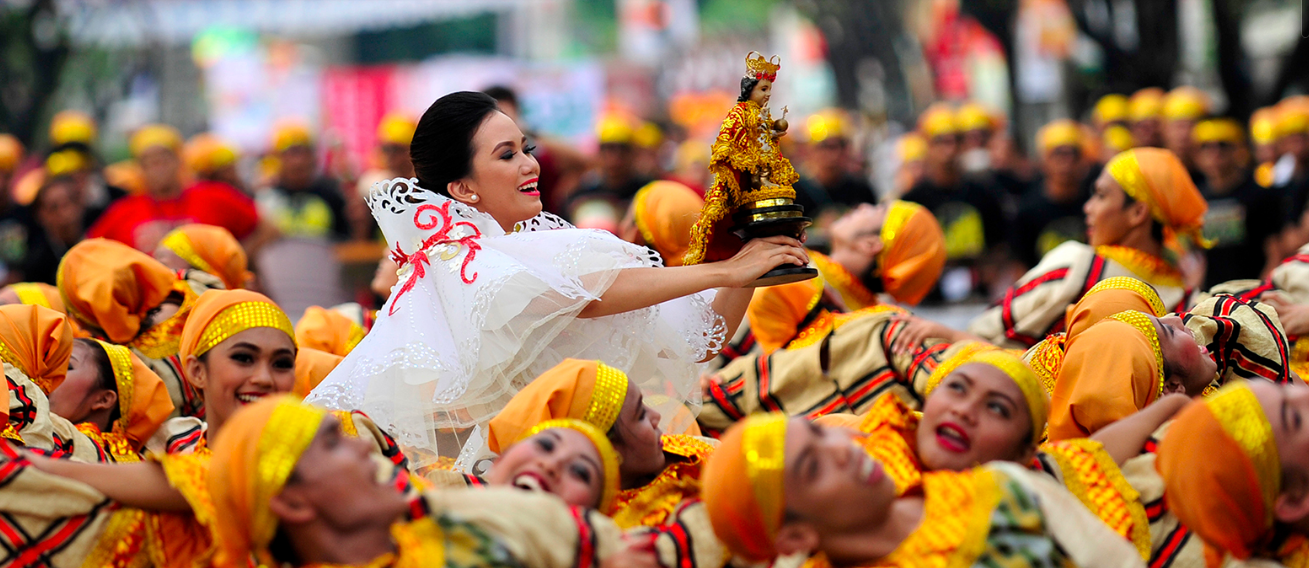
While the country’s biggest festival is best known for the crazy parties happening on the streets, Sinulog goes beyond that. Here’s everything you need to know for Sinulog 2018.
HISTORY OF SINULOG
As always, we always understand why and how it started.
“One Beat. One Dance. One Vision.” This theme has continuously defined the grandiose Sinulog celebration that attracts revelers every year. A festival that can be traced back to a rich history, Sinulog has always been identified with the Queen City—linking us with our pagan past and our Christian present.
At the time when our ancestors worshipped wooden idols and anitos, Sinulog was already a dance ritual honoring these elements. Upon the arrival in 1521 of Portuguese explorer Ferdinand Magellan who introduced Christianity to the country, he presented the Santo Niño image as a baptismal gift to Cebu’s ruler Rajah Humabon and his wife, Hara Amihan. Subsequently, the natives were converted to Christianity and started offering dances but this time in reverence to the Child Jesus.
The term Sinulog comes from the Cebuano word “sulog” which means “water current movement”. The rhythmically forward-backward dance steps of Santo Niño devotees during the Sinulog Grand Parade is said to resemble the movement of currents of water. Cebu’s first Sinulog parade took place in 1980, and the festival has now been institutionalized, making it an annual event.
Today, Sinulog is one of the grandest, most colorful and best-known festivals in the country. A cultural-religious celebration that lasts for nine days, it involves solemn activities widely participated in by Cebuanos whose deep faith in the Holy Child go beyond boundaries. The massive preparation and warm welcome put up by the locals for the upcoming Sinulog festival truly proves their strong devotion to the Santo Niño who has greatly influenced the lives of the Cebuano people. (By Ansylle Mae Bontuyan)
NOVENA MASSES SCHEDULE
Throught that, it is said that the image is stored in what is today the Basilica Minore del Sto. Nino—where thousands of faithfuls will come every year to worship and give praise the Holy Child. Up until now, Sinulog can’t be done without the novena schedule that succeeds prior to the Pista Señor, that is in honor of the Sr. Sto. Nino.
Here’s the schedule of some of the activities at the Basilica.
January 11, Thursday – Opening Salvo
4:00am – Walk With Jesus
5:30am – Holy Mass (Installation of Hermano Mayor and Hermana Mayores 2018)
And with some of the novena masses schedules done from January 11-18, 2018.
4:00am – Holy Mass (Cebuano)
5:30am – Holy Mass (Cebuano)
7:00am – Holy Mass (Cebuano)
8:30am – Holy Mass (English)
10:00am – Holy Mass (Cebuano)
11:30am – Holy Mass (English)
1:00pm – Holy Mass (English)
2:30pm – Holy Mass (Cebuano)
4:00pm – Holy Mass (Cebuano)
5:30pm – Holy Mass (English)
7:00pm – Holy Mass (English)
January 19, Friday
4:00am – Walk With Mary
7:00am – Traslacion (going to National Shrine of Saint Joseph Parish, Mandaue City)
January 20, Saturday (Visperas)
3:00am – Traslacion (from Mandaue to the National Shrine of Nuestra Señora de Regla Parish, Lapu-lapu City)
6:00am – Fluvial Procession
9:00am – Renactment of the First Mass, Wedding and Baptism
1:00pm – Solem Procession
6:00pm – Pontifical Mass
January 21, Sunday (Fiesta Señor Day)
4:00am – Mañanita Mass
6:00am – Pontifical Mass
followed by regular Sunday mass schedules
Source: Sinulog Foundation Website (for full details visit the website them here)
SCHEDULE OF ACTIVITIES
On to the festival side, there’s a lot we can expect to. From gigantes to dances, here’s the schedule to some of the highlights this Sinulog.
January 1 – 30 – Sinulog Street Fair
January 12, Friday – Sinulog 2018 Kick Off
January 13, Saturday – Sinulog sa Lalawigan
January 14, Sunday – Sinulog sa Barangay
January 15, Monday – Cultural Show at Plaza Independencia
Sinulog Idol Eliminations
January 18, Thursday – Sinulog Festival Queen 2018 Photoshoot
– Sinulog Festival Queen 2018 Parade of Costumes & Runway Competition at SM City Cebu
– Sky Night at Plaza Independencia
January 19, Friday – Festival Queen Coronation Night at Cebu City Sports Center
– Dance Crew Grand Showdown at Cebu City Sports Center
January 20, Saturday – Sinulog 2018 Grand Finals at Plaza Independencia
– Sinulog 2018 Fireworks Competition at SM City Cebu
January 21, Sunday – Sinulog Grand Parade
Source: Sinulog Foundation Website (for full details visit the website them here)
SINULOG WEEKEND WARPLAN
Now for the parties, we never get tired of having fun during these times. As it becomes a yearly habit for us. We give you the following schedule for the ultimate Sinulog parties that will take place in the city.
January 19, Friday
Lifedance
City di Mare, South Road Properties
January 20, Saturday
Plus 63 Music and Arts Festival
Cebu Business Park
Hyper Wonderland
Axis Entertainment Avenue
Paintensity
SM Seaside City Open Grounds
January 21, Sunday
Neon Jungle: Sinulog Music Festival
The Sentral Cebu, Norkis Cyberpark, Mandaue City
SINULOG GRAND PARADE CONTEST
Tickets are sold through Sinulog Foundation Inc. You can visit the website here. (https://sinulog.ph/shop/)
SINULOG ROUTE MAP
Plan ahead as we don’t know how much traffic we can get and we can contribute. Please see the following route through this website. sinulog.ph
Arts & Culture
Visayas Art Fair Year 5: Infinite Perspectives, Unbound Creativity
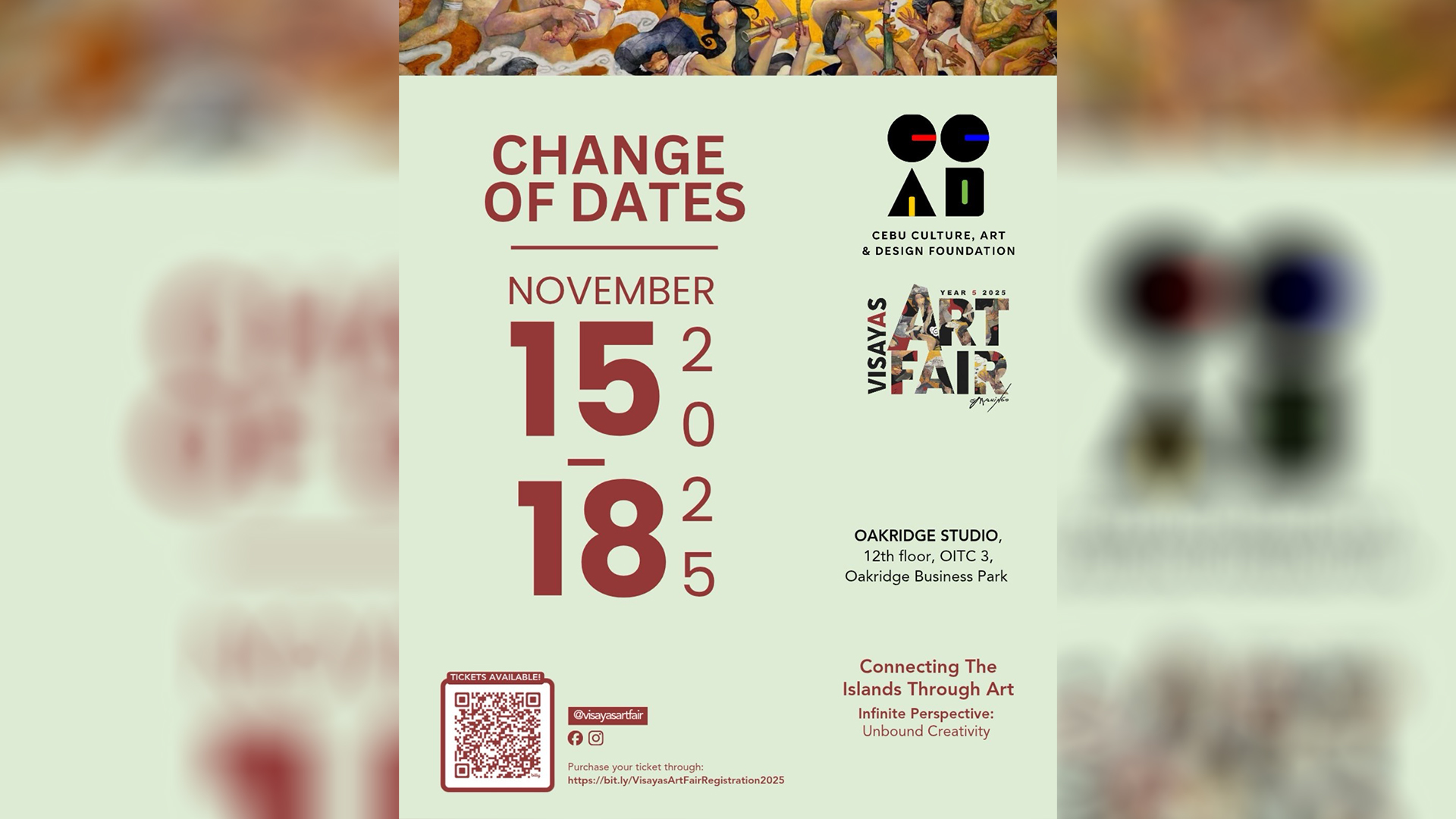
by Jing Ramos
This year’s Visayas Art Fair marks its 5th anniversary, celebrating the theme “Infinite Perspectives: Unbound Creativity.” The fair continues its mission of bridging creativity, culture, and community in the country. This milestone edition strengthens its partnership with the National Commission for Culture and the Arts and expands collaborations with regional art organizations and collectives—reinforcing its role as a unifying platform for Philippine art.
VAF5 features the works of Gil Francis Maningo, honoring the mastery of his gold leaf technique on opulent portraits of the Visayan muse Carmela, reflecting spiritual awareness.

Gil Francis Maningo is celebrated for his gold leaf technique.
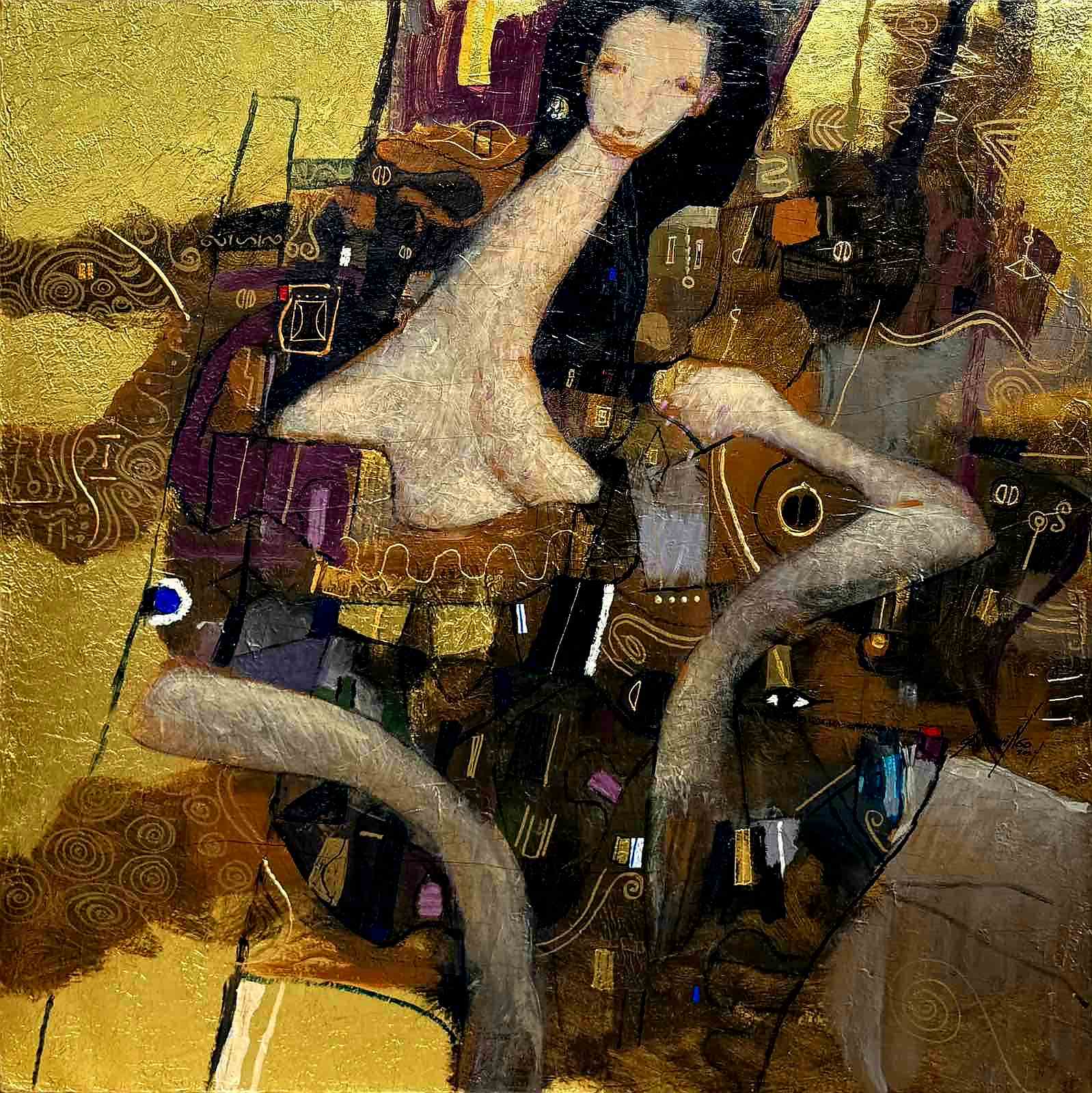
Gil Francis Maningo’s recurring theme of his Visayan muse “Carmela”.
Another featured artist is Danny Rayos del Sol, whose religious iconography of Marian-inspired portraits offers a profound meditation on the sacred and the sublime. This collaboration between two visual artists sparks a dialogue on the Visayan spirit of creativity and resilience. Titled “Pasinaya,” this dual showcase explores gold leaf as a medium of light and transcendence.
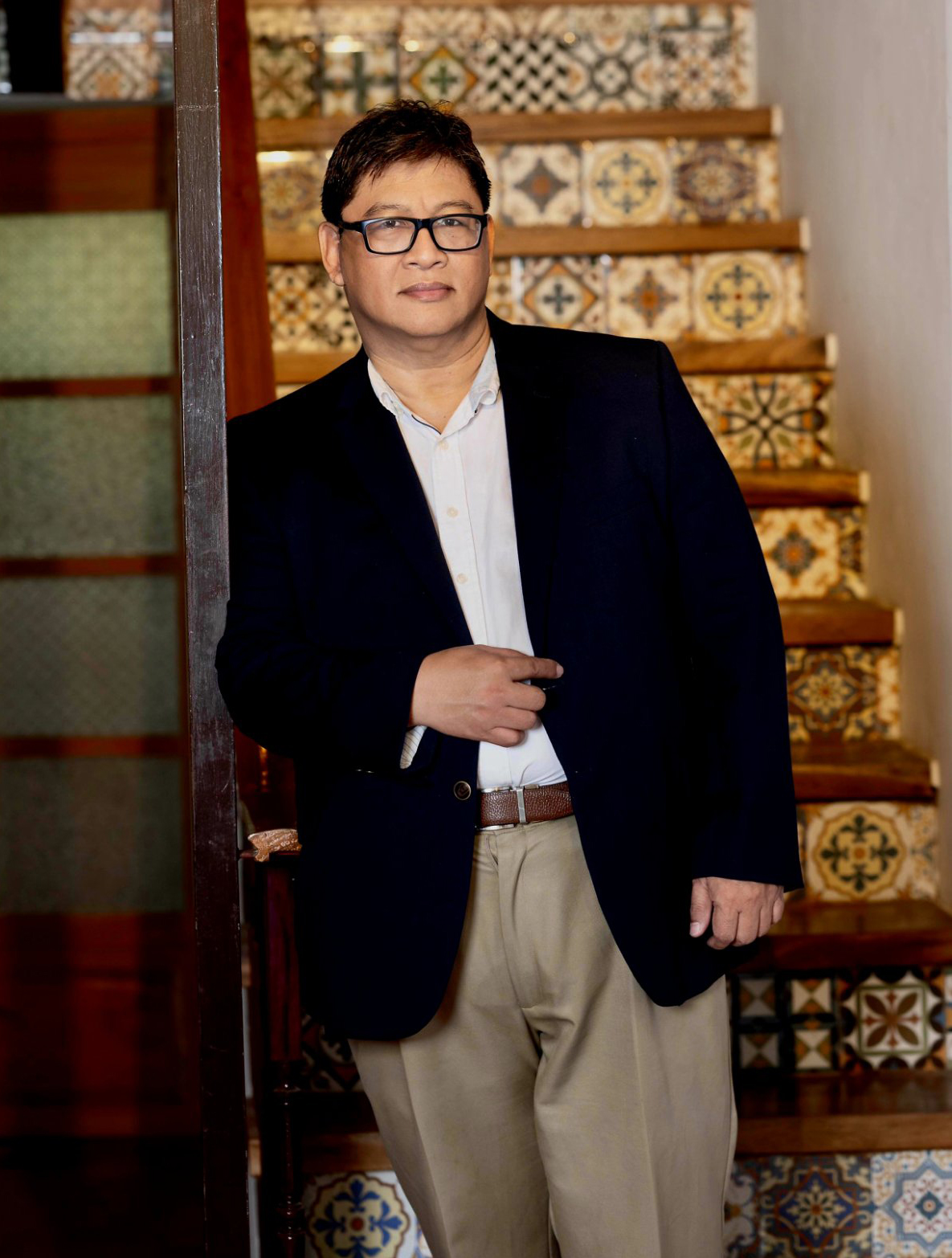
Artist Danny Reyes del Sol

Danny Reyes del Sol’s religious iconography.
Now in its fifth year, the Visayas Art Fair has influenced a community of artists, gallerists, brokers, collectors, museum curators, and art critics—constructing a narrative that shapes how we approach and understand the artist and his work. This combination of factors, destined for popular consumption, illustrates the ways in which art and current culture have found common ground in a milieu enriched by the promise of increased revenue and the growing value of artworks.
Laurie Boquiren, Chairman of the Visayas Art Fair, elaborates on the theme, expressing a vision that celebrates the boundless imagination of unique artistic voices:
“Infinite Perspectives speaks of the countless ways artists see, interpret, and transform the world around them—reminding us that creativity knows no single point of view. Unbound Creativity embodies freedom from convention and controlled expression, allowing every artist to explore and experiment without borders.”
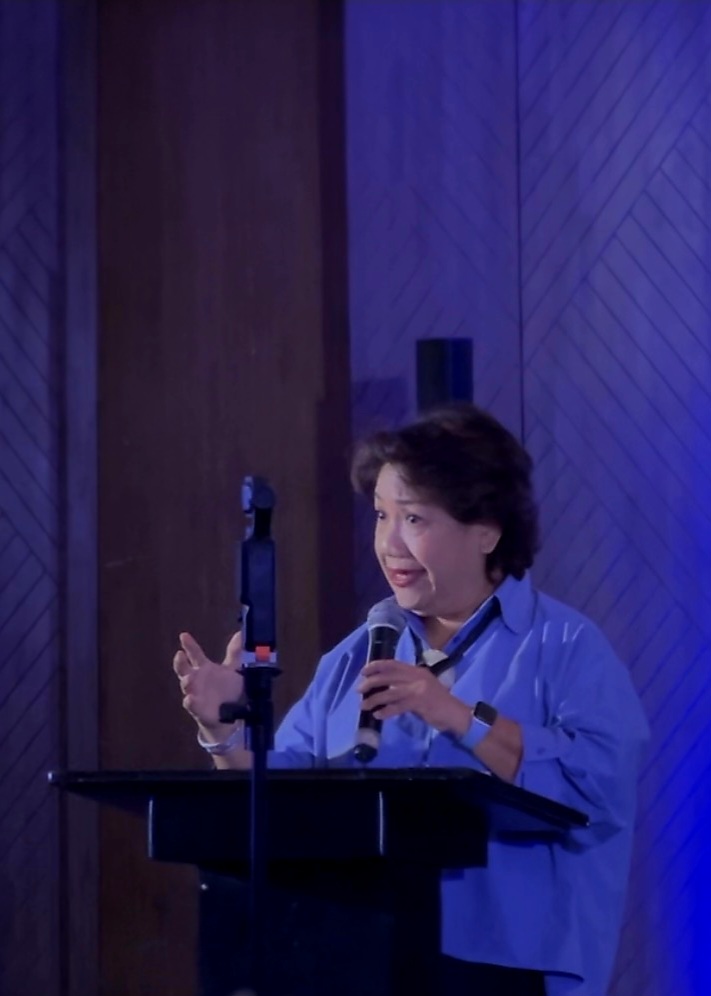
Laurie Boquiren, Chairman of the Visayas Art Fair has tirelessly championed the creative arts for the past five years.
Arts & Culture
Kultura. Kapital. Kasalukuyan: Art that Speaks of Today
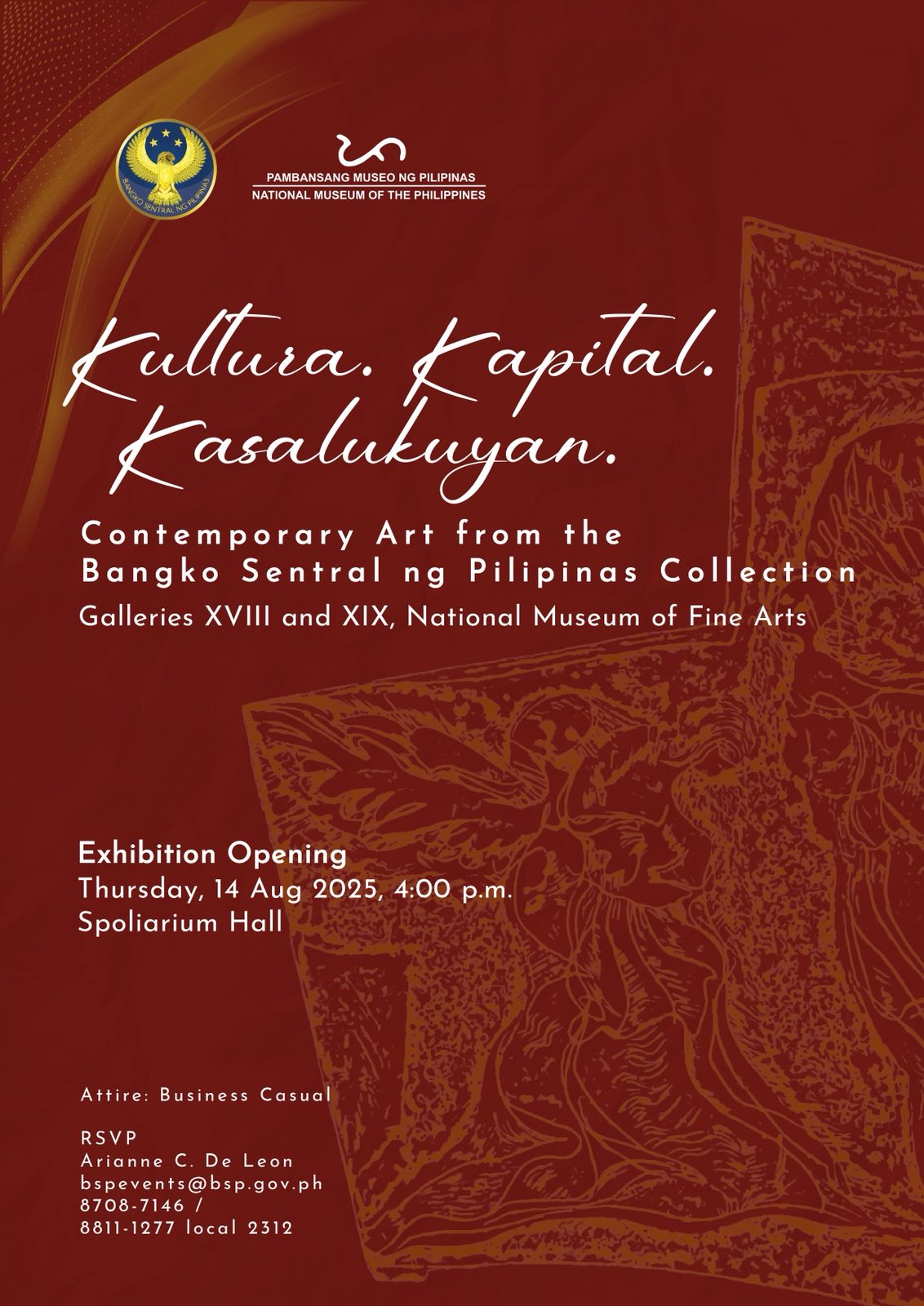
by Jose Carlos G. Campos, Board of Trustees National Museum of the Philippines
The National Museum of the Philippines (NMP) and the Bangko Sentral ng Pilipinas (BSP) recently teamed up to prove that money isn’t just for counting—it’s also for curating! Their latest joint exhibition, Kultura. Kapital. Kasalukuyan: Contemporary Art from the Bangko Sentral ng Pilipinas Collection, is now open, and it’s a real treat for art lovers and culture buffs alike.
On display are gems from the BSP’s contemporary art collection, including masterpieces by National Artist Benedicto Cabrera (Bencab), along with works by Onib Olmedo, Brenda Fajardo, Antipas Delotavo, Edgar Talusan Fernandez, and many more. Some of the artists even showed up in person—Charlie Co, Junyee, Imelda Cajipe-Endaya, Demi Padua, Joey Cobcobo, Leonard Aguinaldo, Gerardo Tan, Melvin Culaba—while others sent their family representatives, like Mayumi Habulan and Jeudi Garibay. Talk about art running in the family!
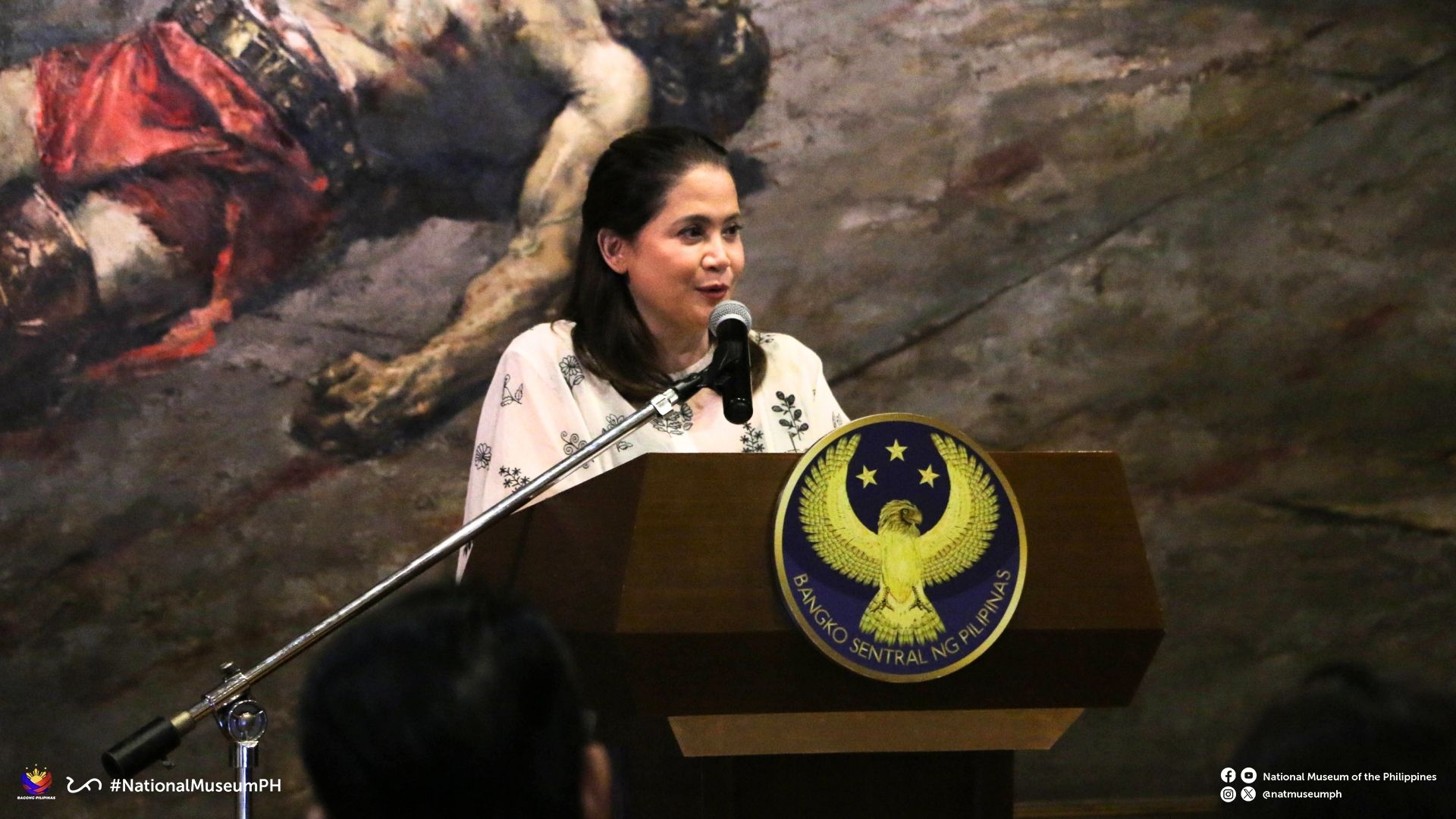
Deputy Governor General of the BSP, Berna Romulo Puyat

Chairman of NMP, Andoni Aboitiz
The BSP Governor Eli M. Remolona, Jr. and members of the Monetary Board joined the event, alongside former BSP Governor Amando M. Tetangco, Jr., Ms. Tess Espenilla (wife of the late Nestor A. Espenilla, Jr.), and the ever-graceful former Central Bank Governor Jaime C. Laya, who gave a short but enlightening talk about the BSP art collection.
From the NMP, Chairman Andoni Aboitiz, Director-General Jeremy Barns, and fellow trustees NCCA Chairman Victorino Mapa Manalo, Carlo Ebeo, and Jose Carlos Garcia-Campos also graced the occasion. Chairman Aboitiz expressed gratitude to the BSP for renewing its partnership, calling the exhibition a shining example of how financial institutions can also enrich our cultural wealth.

Former Governor of BSP Jaime Laya
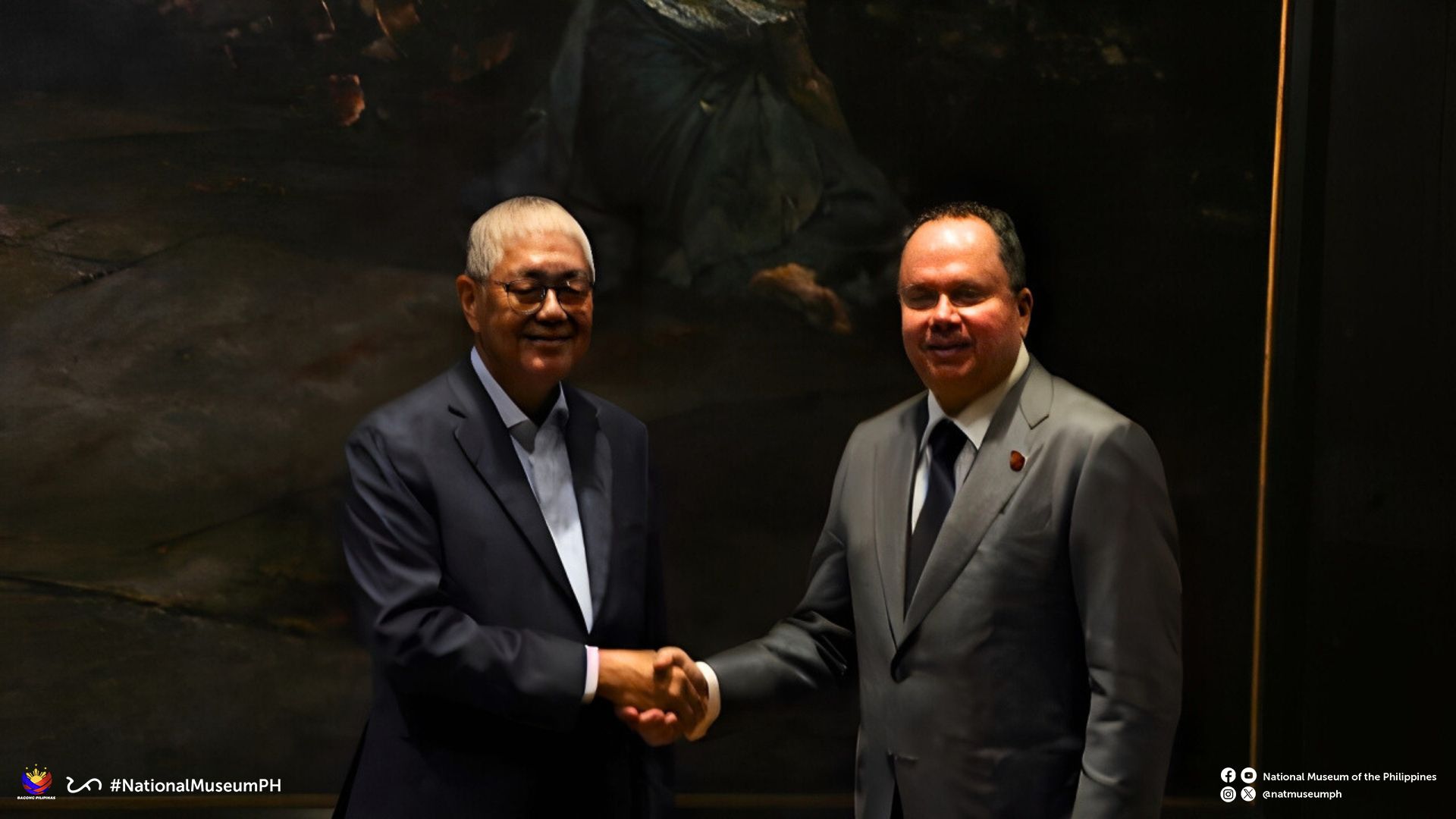
Governor of BSP Eli M. Remona and Chairman of NMP Board Andoni Aboitiz
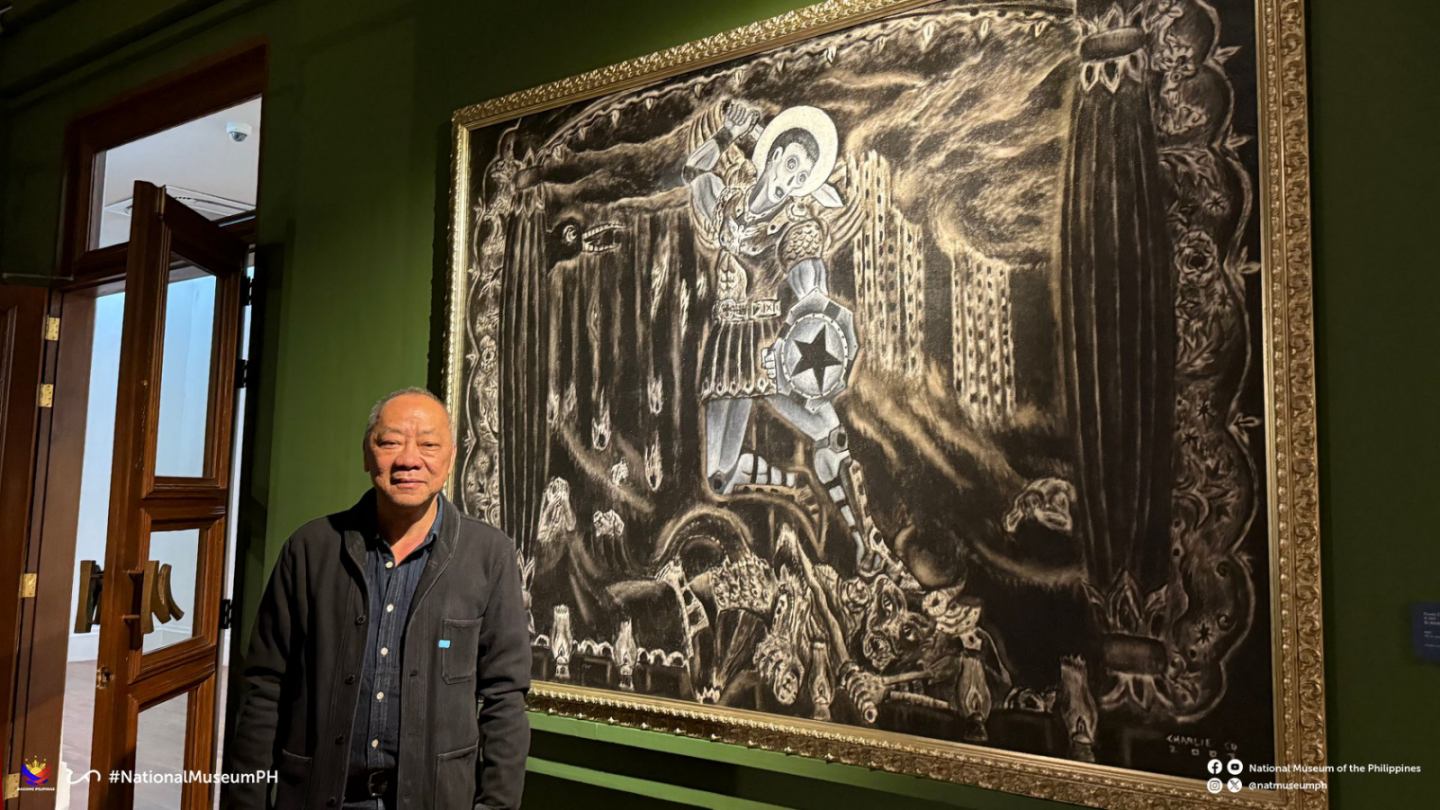
Artist Charlie Co
Before the official launch, a special media preview was held on 5 August, hosted by BSP Deputy Governor Bernadette Romulo-Puyat and DG Jeremy Barns. It gave lucky guests a sneak peek at the collection—because sometimes, even art likes to play “hard to get.”
The exhibition Kultura. Kapital. Kasalukuyan will run until November 2027 at Galleries XVIII and XIX, 3/F, National Museum of Fine Arts. Doors are open daily, 9:00 AM to 6:00 PM. So if you’re looking for something enriching that won’t hurt your wallet (admission is free!), this is your sign to visit. After all, the best kind of interest is cultural interest.
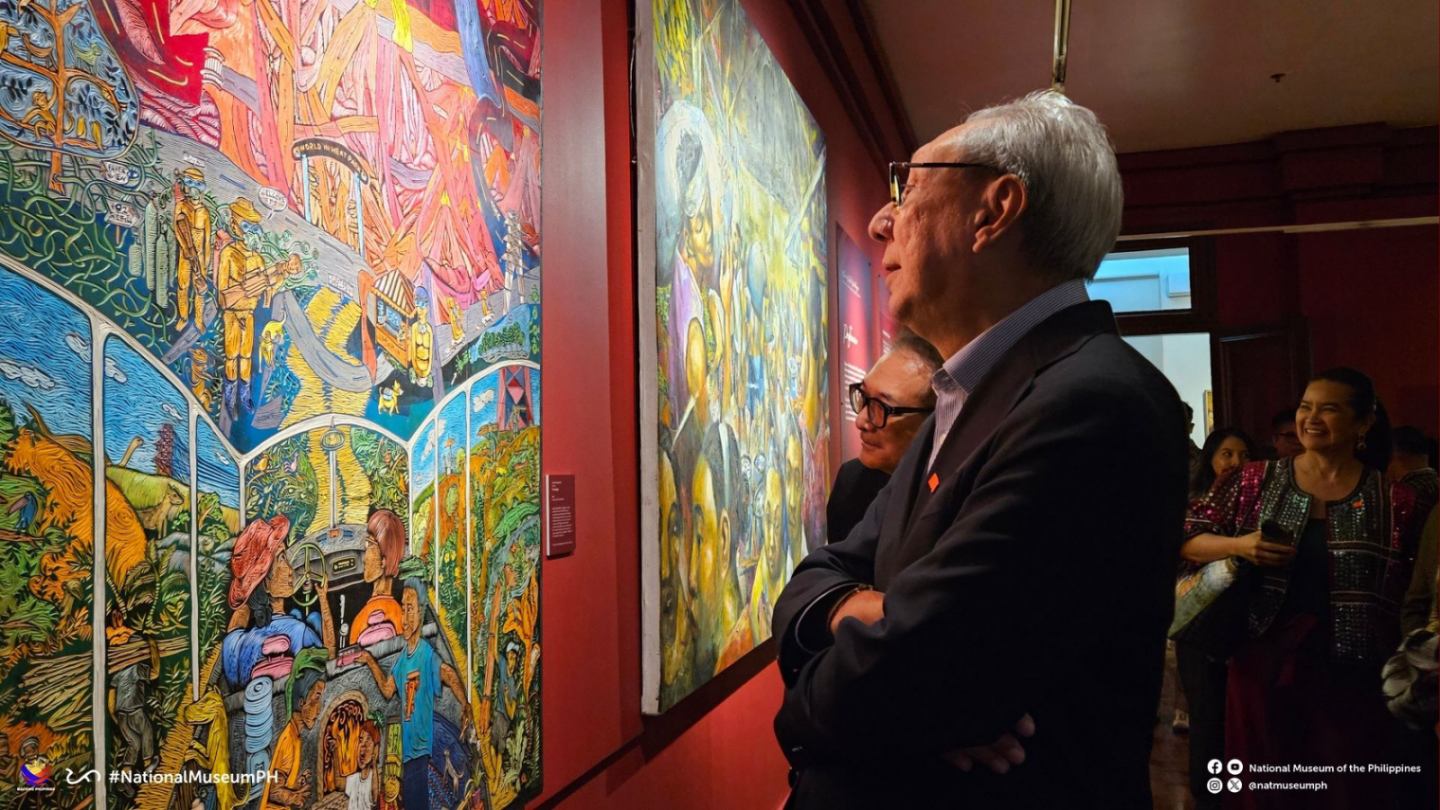
Monetary Board of the BSP, Walter C. Wassmer
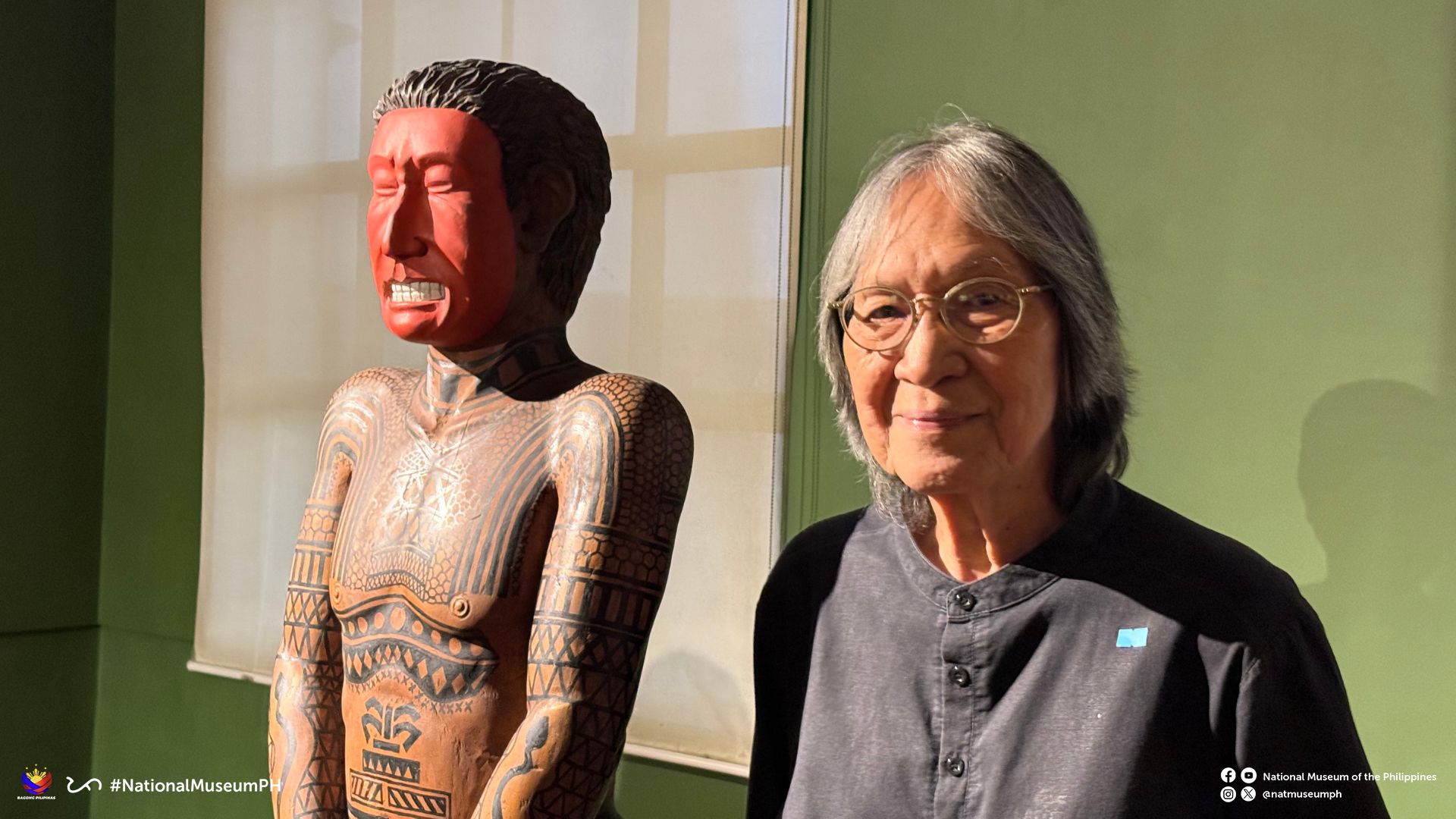
Luis Yee, Jr. aka ‘Junyee’ The Artist beside his Sculpture

Arvin Manuel Villalon, Acting Deputy Director General for Museums, NMP with Ms. Daphne Osena Paez
Arts & Culture
Asia’s Fashion Czar I Knew as Tito Pitoy; Remembrance of a Friendship Beyond Fashion with Designer Jose R. Moreno

by Jose Carlos G. Campos, Board of Trustees National Museum of the Philippines
My childhood encounter with the famous Pitoy Moreno happened when I was eight years old. My maternal grandmother, Leonila D. Garcia, the former First Lady of the Philippines, and my mother, Linda G. Campos, along with my Dimataga aunts, brought me to his legendary atelier on General Malvar Street in Malate, Manila. These were the unhurried years of the 1970s.
As we approached the atelier, I was enchanted by its fine appointments. The cerulean blue and canary yellow striped canopies shaded tall bay windows draped in fine lace—no signage needed, the designer’s elegance spoke for itself. Inside, we were led to a hallway adorned with Art Deco wooden filigree, and there was Pitoy Moreno himself waiting with open arms—”Kamusta na, Inday and Baby Linda,” as he fondly called Lola and Mommy.
“Ahhh Pitoy, it’s been a while,” Lola spoke with joy.
“Oh eto, may kasal na naman,” my mom teasingly smiled.
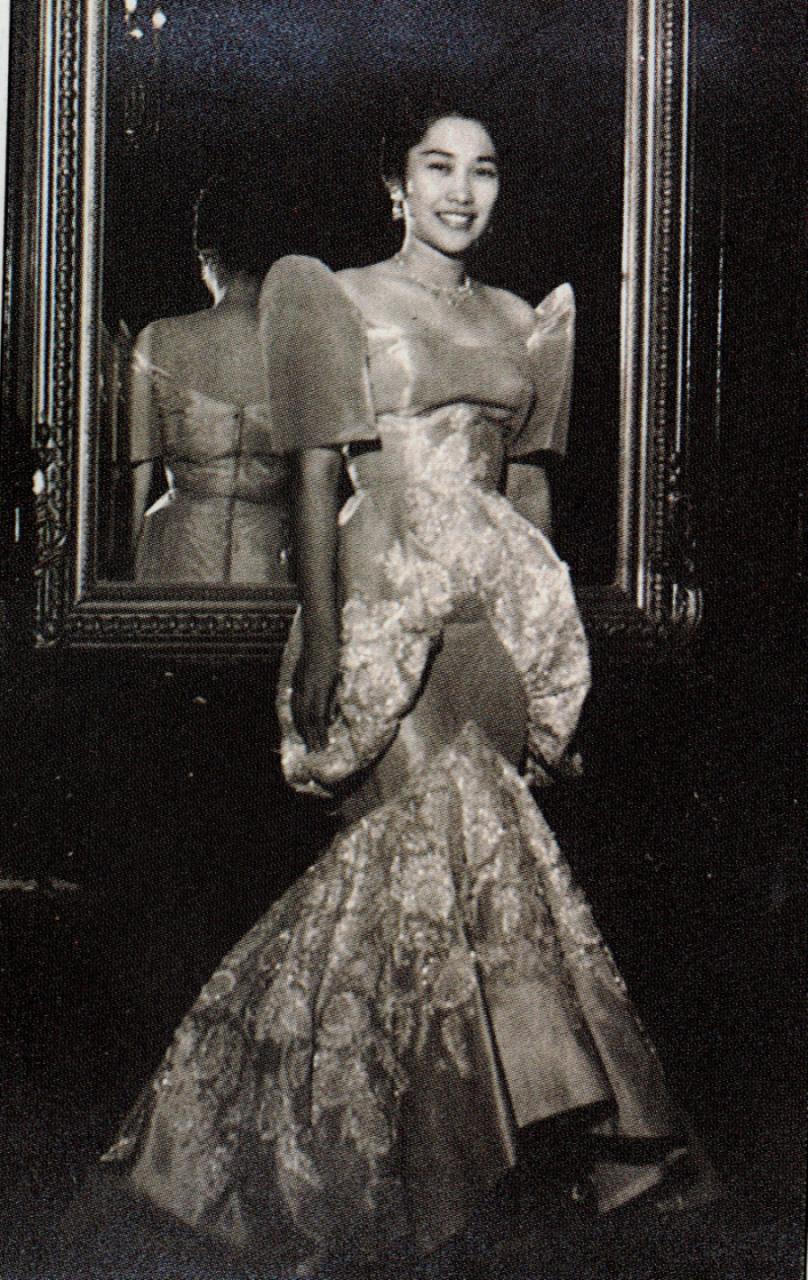
Linda Garcia Campos and Pitoy Moreno’s friendship started when they were students in the University of the Philippines in Diliman.
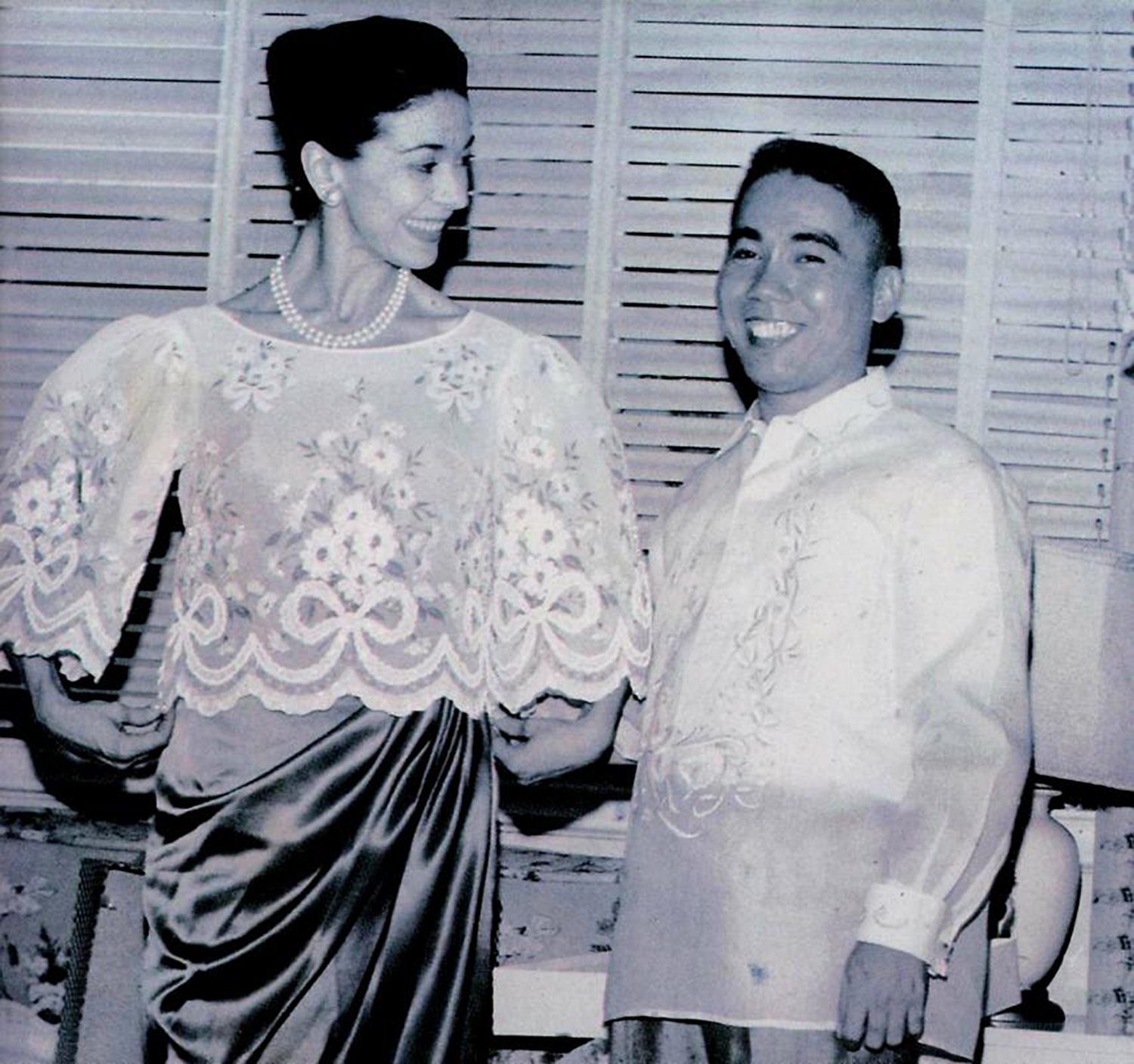
When Dame Margot Fonteyn came for a visit to Manila, Pitoy Moreno dressed her up for an occasion.
We had entered a world of beauty—porcelain figurines, ancient earthenware and pre-colonial relics. It was like stepping into a looking glass, only Pitoy could have imagined.
Destiny led me back years later when my mother Linda told me that Pitoy Moreno was working on his second book, Philippine Costume, and needed research material and editorial advice. At this point, around the 1990s, I was in between assignments—unsure of how a broadcasting graduate like me could possibly contribute to a fashion icon’s masterpiece. Fortunately, I agreed to the project.
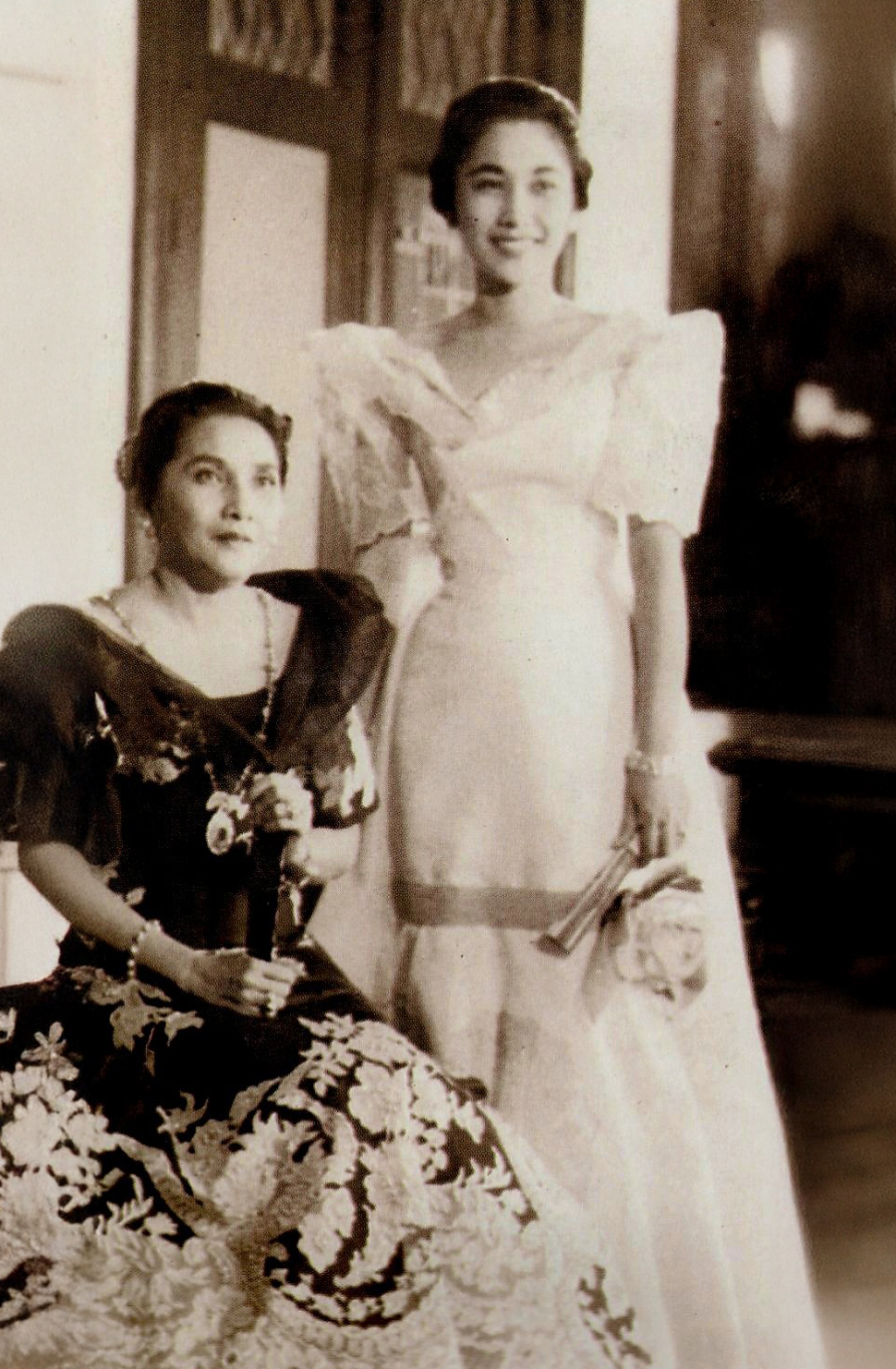
Former First Lady Leonila D. Garcia and daughter Linda G. Campos in Malacañang Palace.
Returning to the designer’s atelier brought back a rush of pleasant memories. The gate opened, and there stood Pitoy Moreno, beaming as always.
“Come in, hijo. Let me show you what I have in mind—and call me Tito Pitoy, okay?”
He led me to his worktable.
“I want to publish a book that tells the story of Philippine fashion—from our pre-colonial roots to the present. A designer’s collection of images and heritage expressed in clothing.”
I was awestruck. “How can I help you?” I inquired.
“Did you know that your mother, Linda, was my barkada in the University of the Philippines in Diliman?” he grinned.

US President Dwight Eisenhower with First Lady Leonila Garcia and President Carlos Garcia in a state dinner at Malacañang Palace in Manila.
That friendship soon led to one of the proudest moments of the designer’s life. He had the opportunity to dress not only the First Lady Leonila D. Garcia but also President Carlos P. Garcia during his term. It was also during this time that the President of the United States, Dwight Eisenhower, came for an official visit to Manila. The designer was able to make clothes for the President, his daughter, and his staff.
“Eisenhower even asked for discounts on the barong Tagalog,” Tito Pitoy laughed.
Tito Pitoy then asked if I could find a terno he had made for my Lola, the former First Lady, which she wore for President Eisenhower’s state visit in 1960.
“How about her other ternos, dated from the 1920s to the 1960s?” I offered.
He lit up.
I scoured my Lola’s extensive closet—it felt like unearthing a legacy. Tucked behind layers of vintage ternos from countless fashion designers, I found that terno, which was photographed by Dick Baldovino along with other pieces for the book project. Once the project was finished and I myself had moved on, my bond with Tito Pitoy never wavered.
When my Lola passed away, he was deeply touched when I personally informed him of the sad news. Once, at the wake of former Vice President Salvador Laurel, he asked me to assist him in the placement of the medals in the chapel.
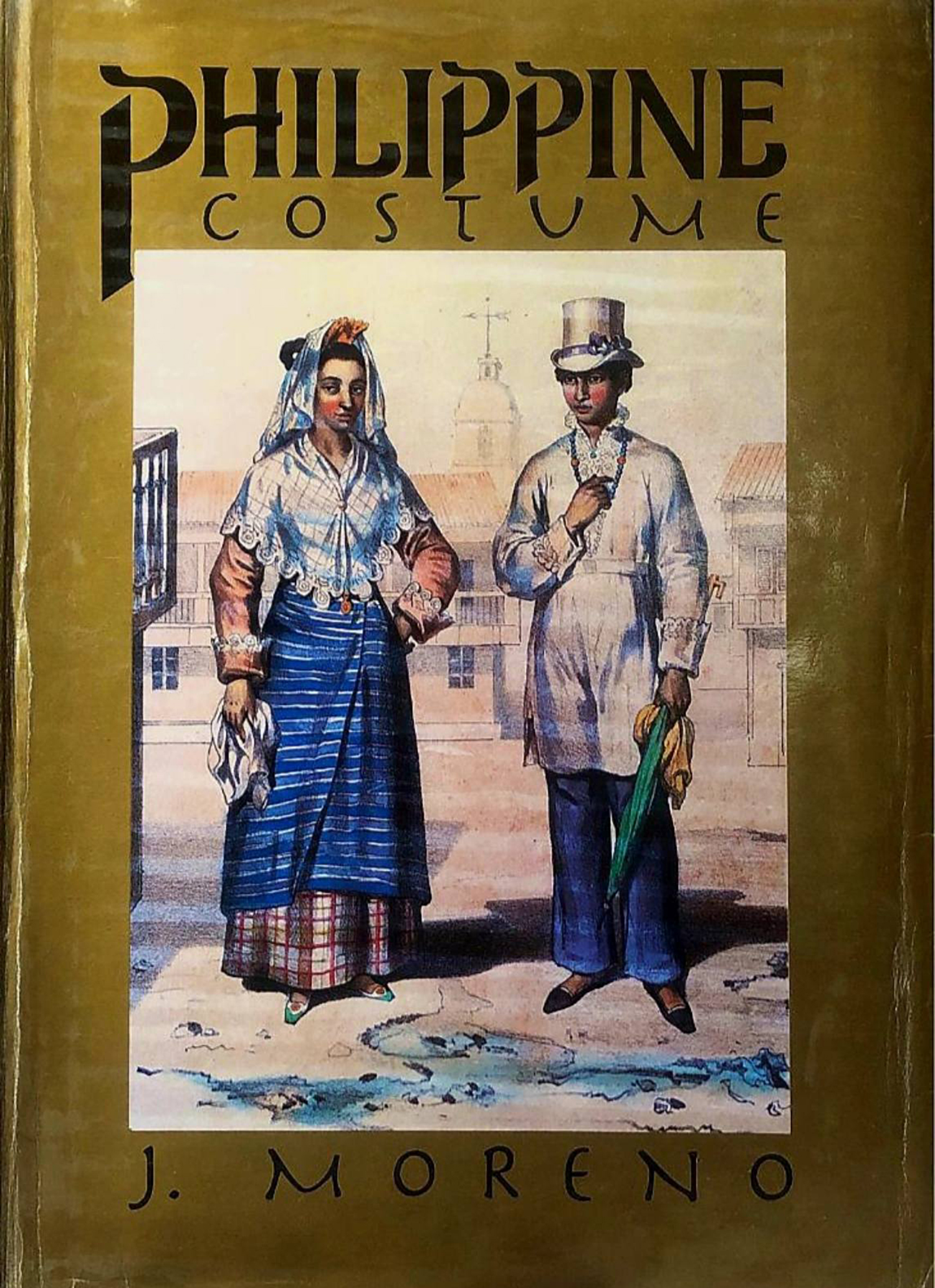
Philippine Costume by Jose Moreno is the designer’s collection of images and heritage expressed in clothing.
Tito Pitoy later invited me to his 80th birthday celebration—a dazzling Manila affair in 2012. During the evening’s festivities, he handed me a printed copy of Philippine Costume and added warmly,
“Thank you, hijo. I’ll call on you for the next one.”
The highlight of his career—and his most unforgettable moment—came during the Metro Magazine Gala fashion show: A Tribute to Pitoy Moreno, Fashion Icon. A collection of evening gowns spanning six decades—many of them unseen and tucked away in his atelier—were revealed that night. When the finale came, Tito Pitoy walked the stage, triumphant and waving to a sea of admirers. Longtime friends from the industry, society’s finest, and fashionistas rose from their seats and gave him a standing ovation.
It wasn’t just to celebrate his craft and ingenuity—it was to honor the man who brought elegance, history, and heart in every stitch.
-

 Style2 months ago
Style2 months agoHappy Melendres Traipsing Around Manhattan in Non-Stop Armani
-

 Arts & Culture3 months ago
Arts & Culture3 months agoKultura. Kapital. Kasalukuyan: Art that Speaks of Today
-
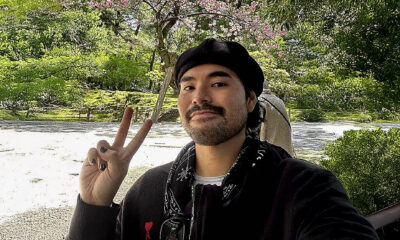
 Prime Target2 months ago
Prime Target2 months agoMiko Sarmiento: Turning Silk Scarves Into Works of Art
-
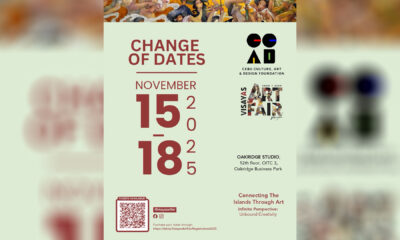
 Arts & Culture1 month ago
Arts & Culture1 month agoVisayas Art Fair Year 5: Infinite Perspectives, Unbound Creativity
-
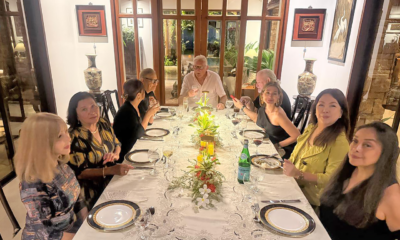
 The Scene3 months ago
The Scene3 months agoAnother Elegant Dinner at Chez Marguerite
-

 Prime Target3 months ago
Prime Target3 months agoLuna Vdl–Endless Summers in Siargao
-

 QuickFx3 months ago
QuickFx3 months agoI Lost It at the Movies: Five of the Most Significant Films of the 1960s
-

 Travel1 month ago
Travel1 month agoAutumn in Istanbul: Fellow Travellers Share Turkish Delights




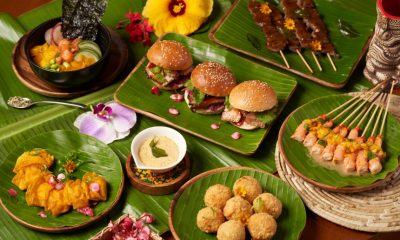











You must be logged in to post a comment Login